-
 Bitcoin
Bitcoin $83,649.7703
-1.06% -
 Ethereum
Ethereum $1,818.4708
-2.72% -
 Tether USDt
Tether USDt $1.0000
0.01% -
 XRP
XRP $2.0495
-3.21% -
 BNB
BNB $597.8591
-1.20% -
 Solana
Solana $118.6021
-5.26% -
 USDC
USDC $1.0000
0.01% -
 Dogecoin
Dogecoin $0.1642
-3.52% -
 Cardano
Cardano $0.6526
-2.99% -
 TRON
TRON $0.2343
-0.56% -
 Toncoin
Toncoin $3.7346
-7.00% -
 UNUS SED LEO
UNUS SED LEO $9.4260
0.63% -
 Chainlink
Chainlink $12.9796
-3.63% -
 Stellar
Stellar $0.2617
-1.79% -
 Avalanche
Avalanche $18.3920
-4.15% -
 Sui
Sui $2.3105
-2.61% -
 Shiba Inu
Shiba Inu $0.0...01222
-0.74% -
 Hedera
Hedera $0.1630
-1.67% -
 Litecoin
Litecoin $83.6143
1.85% -
 Polkadot
Polkadot $4.0068
-2.05% -
 MANTRA
MANTRA $6.3564
2.37% -
 Bitcoin Cash
Bitcoin Cash $306.7380
0.76% -
 Bitget Token
Bitget Token $4.5736
-0.36% -
 Dai
Dai $1.0001
0.01% -
 Ethena USDe
Ethena USDe $0.9998
0.00% -
 Pi
Pi $0.6284
-6.81% -
 Hyperliquid
Hyperliquid $11.9330
-10.11% -
 Monero
Monero $213.7810
-0.49% -
 Uniswap
Uniswap $5.9757
-2.02% -
 Aptos
Aptos $5.2294
-1.01%
What is a decentralized autonomous organization? What is its operating logic?
DAOs are community-led entities governed by smart contracts on blockchains, ensuring transparency and eliminating centralized control, though they face challenges like smart contract vulnerabilities.
Mar 31, 2025 at 07:42 pm
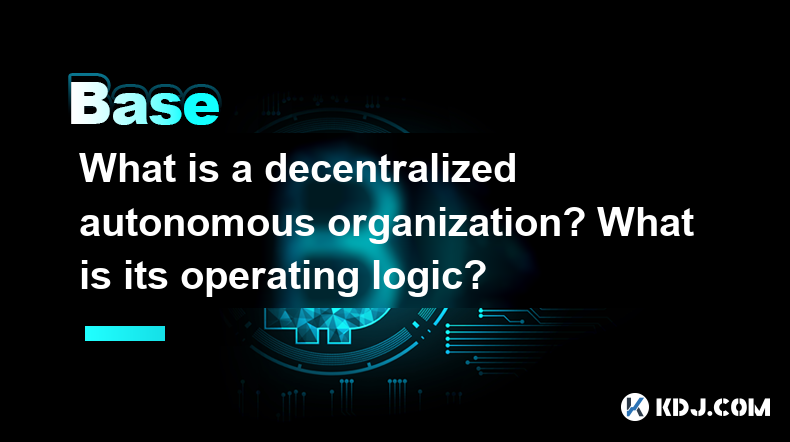
Understanding Decentralized Autonomous Organizations (DAOs)
A Decentralized Autonomous Organization (DAO) is a community-led entity governed by rules encoded as a computer program. This program, typically a smart contract on a blockchain, dictates how the DAO operates without the need for centralized authority. Members participate through tokens, often granting voting rights proportional to their holdings. Decisions are made collectively through on-chain voting, making the organization transparent and resistant to censorship. This contrasts sharply with traditional organizations governed by a board of directors or a single CEO.
The Operating Logic of a DAO
The core logic of a DAO revolves around its smart contracts. These contracts define the organization's rules, including membership requirements, treasury management, and proposal processes. The smart contracts enforce these rules automatically, eliminating the need for intermediaries or human intervention. This automation ensures transparency and immutability, key features distinguishing DAOs from traditional organizations. The process typically involves members submitting proposals, followed by a voting period where token holders cast their votes. Once a proposal passes, the smart contract automatically executes the decision.
Membership and Governance in DAOs
Membership in a DAO usually involves acquiring governance tokens. These tokens represent ownership and provide voting rights within the organization. The amount of voting power often correlates directly with the number of tokens held. This token-based governance mechanism ensures a fair and transparent distribution of power among members. However, different DAOs may implement variations in their governance structures, allowing for different levels of participation and influence. Some DAOs might utilize quadratic voting or other mechanisms to mitigate the impact of large token holders.
Treasury Management in DAOs
DAOs typically manage their funds through a decentralized treasury, also controlled by smart contracts. These contracts govern how funds are allocated, ensuring transparency and preventing unauthorized access. Proposals for treasury spending are typically submitted and voted on by members, promoting collective decision-making. This contrasts with traditional organizations where financial decisions are often made by a select few. The treasury can be used to fund projects, reward contributors, or support the overall growth of the DAO.
Proposal Submission and Voting Process
The process of proposing and voting on changes within a DAO is usually clearly defined by its smart contracts. Members can submit proposals outlining changes to the DAO's operations, funding allocations, or other relevant aspects. These proposals are then publicly available for review and discussion before a voting period begins. The voting period typically lasts for a predetermined amount of time, allowing members to cast their votes based on the proposal's merits. Once the voting period concludes, the smart contract automatically executes the outcome.
The Role of Smart Contracts in DAO Operations
Smart contracts are the backbone of any DAO. They are self-executing contracts with the terms of the agreement between buyer and seller being directly written into lines of code. These contracts define the rules and regulations governing the DAO's operations, ensuring that all actions are transparent and verifiable on the blockchain. This eliminates the need for intermediaries and reduces the risk of fraud or manipulation. The smart contracts automate the execution of decisions, streamlining the DAO's operations and enhancing efficiency.
Challenges and Limitations of DAOs
While DAOs offer numerous advantages, they also face certain challenges. One major challenge is the complexity of smart contract development and auditing. Bugs or vulnerabilities in the smart contracts could lead to significant financial losses or compromise the DAO's security. Another challenge is the potential for disagreements and conflicts among members, especially in larger DAOs. Reaching consensus on complex issues can be difficult and time-consuming. Furthermore, legal and regulatory uncertainty surrounding DAOs remains a significant hurdle for widespread adoption.
Different Types of DAOs
DAOs aren't monolithic; they come in various forms depending on their purpose and structure. Some DAOs focus on specific projects or initiatives, while others serve as investment vehicles or community hubs. The design of the governance token and the smart contracts significantly influence the DAO's overall functionality and purpose. Understanding these variations is crucial for navigating the diverse landscape of DAOs and identifying those that align with individual interests. The evolution of DAO structures continues to be a dynamic and rapidly developing area.
Security Considerations in DAOs
Security is paramount for any DAO. The reliance on smart contracts makes them vulnerable to exploits if not properly audited and secured. Thorough security audits are crucial to identify and mitigate potential vulnerabilities before deployment. Furthermore, DAOs should implement robust security measures to protect against attacks, such as multi-signature wallets and decentralized access control mechanisms. Regular security updates and monitoring are also essential to maintain the integrity and security of the DAO.
The Future of DAOs
DAOs represent a novel approach to organizational structure, offering potential for increased transparency, efficiency, and community empowerment. As blockchain technology continues to evolve, DAOs are likely to become increasingly sophisticated and widely adopted. However, overcoming challenges related to security, scalability, and legal frameworks will be crucial for realizing the full potential of DAOs. Further innovation and development are expected to refine DAO structures and expand their capabilities.
Frequently Asked Questions
Q: What are the benefits of using a DAO?
A: DAOs offer several benefits, including increased transparency due to on-chain governance, enhanced efficiency through automation, and community empowerment through decentralized decision-making. They also offer resilience against censorship and single points of failure.
Q: What are the risks associated with DAOs?
A: Risks include smart contract vulnerabilities leading to exploits, potential for internal disagreements and conflicts, and the ongoing legal and regulatory uncertainty surrounding their operation. Security audits and robust governance mechanisms are crucial to mitigate these risks.
Q: How can I participate in a DAO?
A: Participation typically involves acquiring the DAO's governance token. The process for acquiring tokens varies depending on the specific DAO, often involving purchasing them on a decentralized exchange or participating in a token sale.
Q: What is the difference between a DAO and a traditional organization?
A: A DAO is governed by rules encoded in smart contracts on a blockchain, eliminating the need for centralized authority. Traditional organizations are typically governed by a board of directors or a single CEO, leading to less transparency and more susceptibility to centralized control.
Q: Are DAOs legally recognized entities?
A: The legal status of DAOs varies widely depending on jurisdiction. There is currently a lack of clear legal frameworks governing DAOs, creating uncertainty and requiring careful consideration of legal implications before participating or establishing one.
Disclaimer:info@kdj.com
The information provided is not trading advice. kdj.com does not assume any responsibility for any investments made based on the information provided in this article. Cryptocurrencies are highly volatile and it is highly recommended that you invest with caution after thorough research!
If you believe that the content used on this website infringes your copyright, please contact us immediately (info@kdj.com) and we will delete it promptly.
- FDUSD, BTC, TUSD, SEI, and LINK are the top 5 virtual asset-related keywords attracting the most interest
- 2025-04-03 15:45:12
- Bitcoin Pepe (BPEP) could hit $250 in four years
- 2025-04-03 15:45:12
- TAO Breaks Resistance, HYPE Dips 14%— Yet BlockDAG PullS in $210M Following Keynote 3 Launch!
- 2025-04-03 15:40:13
- Dogecoin (DOGE) Price Prediction: An Analyst Highlights a Bullish Divergence, Suggesting a Rally Could Be in the Cards
- 2025-04-03 15:40:13
- XRP Navigates Volatile Waters, Targeting a Breakout From Its Range
- 2025-04-03 15:35:27
- Meme Cryptocurrency Dogecoin DOGE/USD Falls After President Donald Trump's Tariff Shock, Extending Weekly Losses to Over 16%
- 2025-04-03 15:35:27
Related knowledge

Why can the inverted hammer shape appear at the bottom be used as a reversal signal?
Apr 03,2025 at 04:07pm
Inverted Hammer is a common K-line pattern in technical analysis, and is often regarded as a potential reversal signal when it appears at the bottom. This article will explore in detail why an inverted hammer line may be a reversal signal when it appears at the bottom, and provide specific identification and application methods. Basic characteristics of...
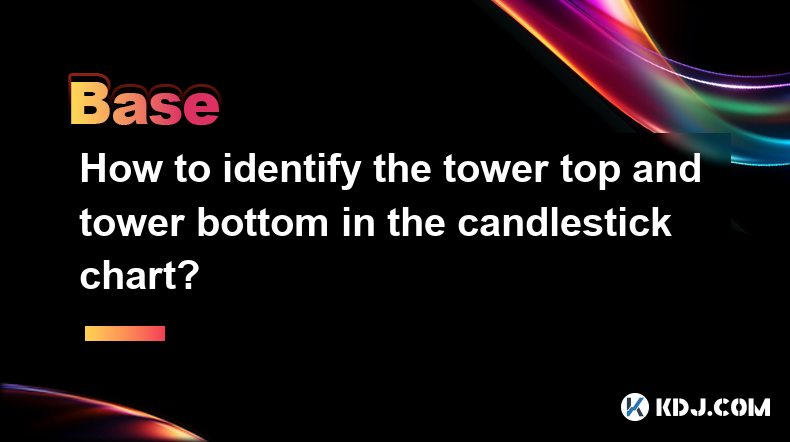
How to identify the tower top and tower bottom in the candlestick chart?
Apr 03,2025 at 04:03pm
In K-line chart analysis, 'Tower Top' and 'Tower Bottom' are two important reversal patterns and are usually used to predict changes in price trends. Identifying these patterns requires careful observation of the price trend and the pattern characteristics of the K-line. Below we will introduce in detail how to identify the 'tower to...
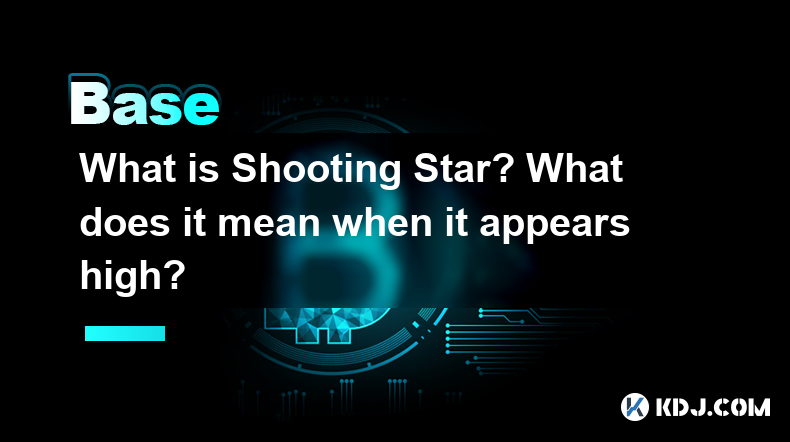
What is Shooting Star? What does it mean when it appears high?
Apr 03,2025 at 03:56pm
In cryptocurrency trading, technical analysis is an important tool to help traders predict future trends of the market. Among them, Shooting Star is a common bearish reversal pattern. This article will give you more details on what 'Shooting Star' is and what it means when it appears at a high level. The definition of 'Shooting Star'Shoo...

What is the difference between dark cloud cover and piercing shape?
Apr 03,2025 at 03:50pm
In the world of cryptocurrency trading, technical analysis is one of the important tools traders use to predict market trends and make trading decisions. Among them, 'Dark Cloud Cover' and 'Piercing Pattern' are two common reversal patterns, which have specific appearance and meaning on the K-line chart. Although they seem similar, there...
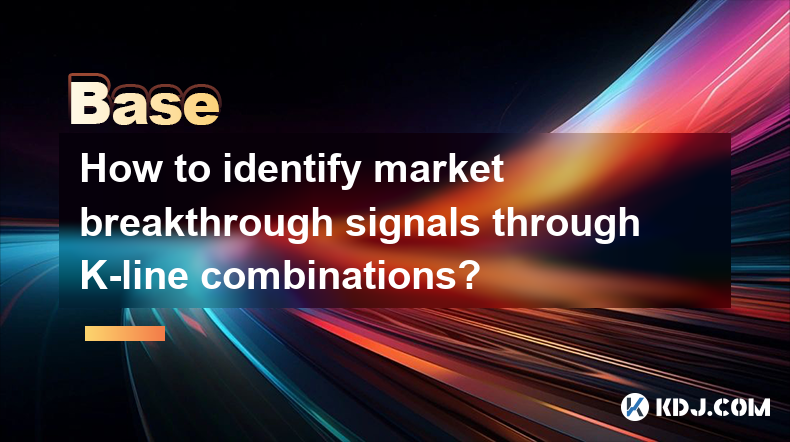
How to identify market breakthrough signals through K-line combinations?
Apr 03,2025 at 03:46pm
In cryptocurrency markets, identifying breakthrough signals is crucial for traders. K-line chart is a commonly used technical analysis tool. By analyzing K-line combinations, traders can more accurately identify the market's breakthrough signals. This article will introduce in detail how to identify the breakthrough signals of the market through the...
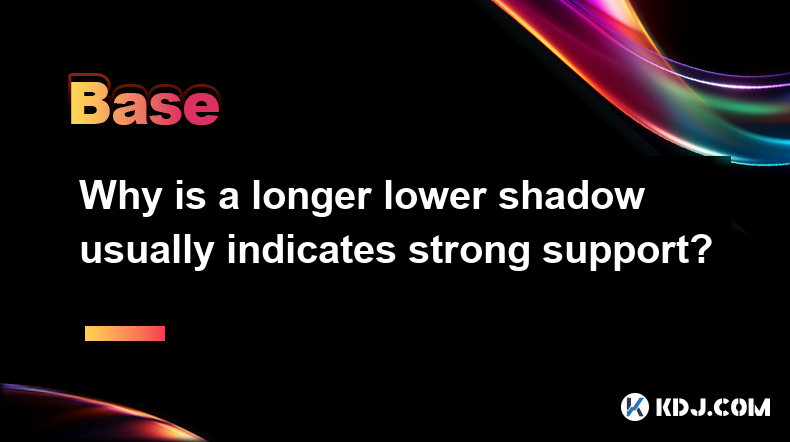
Why is a longer lower shadow usually indicates strong support?
Apr 03,2025 at 03:43pm
The long lower shadow is an important form in technical analysis and is often used by investors to judge the strength of the market's support. The long lower shadow refers to the fact that the lower shadow of a certain K-line is significantly longer than the solid part and the upper shadow in the K-line chart. This pattern usually means that at a ce...

Why can the inverted hammer shape appear at the bottom be used as a reversal signal?
Apr 03,2025 at 04:07pm
Inverted Hammer is a common K-line pattern in technical analysis, and is often regarded as a potential reversal signal when it appears at the bottom. This article will explore in detail why an inverted hammer line may be a reversal signal when it appears at the bottom, and provide specific identification and application methods. Basic characteristics of...

How to identify the tower top and tower bottom in the candlestick chart?
Apr 03,2025 at 04:03pm
In K-line chart analysis, 'Tower Top' and 'Tower Bottom' are two important reversal patterns and are usually used to predict changes in price trends. Identifying these patterns requires careful observation of the price trend and the pattern characteristics of the K-line. Below we will introduce in detail how to identify the 'tower to...

What is Shooting Star? What does it mean when it appears high?
Apr 03,2025 at 03:56pm
In cryptocurrency trading, technical analysis is an important tool to help traders predict future trends of the market. Among them, Shooting Star is a common bearish reversal pattern. This article will give you more details on what 'Shooting Star' is and what it means when it appears at a high level. The definition of 'Shooting Star'Shoo...

What is the difference between dark cloud cover and piercing shape?
Apr 03,2025 at 03:50pm
In the world of cryptocurrency trading, technical analysis is one of the important tools traders use to predict market trends and make trading decisions. Among them, 'Dark Cloud Cover' and 'Piercing Pattern' are two common reversal patterns, which have specific appearance and meaning on the K-line chart. Although they seem similar, there...

How to identify market breakthrough signals through K-line combinations?
Apr 03,2025 at 03:46pm
In cryptocurrency markets, identifying breakthrough signals is crucial for traders. K-line chart is a commonly used technical analysis tool. By analyzing K-line combinations, traders can more accurately identify the market's breakthrough signals. This article will introduce in detail how to identify the breakthrough signals of the market through the...

Why is a longer lower shadow usually indicates strong support?
Apr 03,2025 at 03:43pm
The long lower shadow is an important form in technical analysis and is often used by investors to judge the strength of the market's support. The long lower shadow refers to the fact that the lower shadow of a certain K-line is significantly longer than the solid part and the upper shadow in the K-line chart. This pattern usually means that at a ce...
See all articles























































































